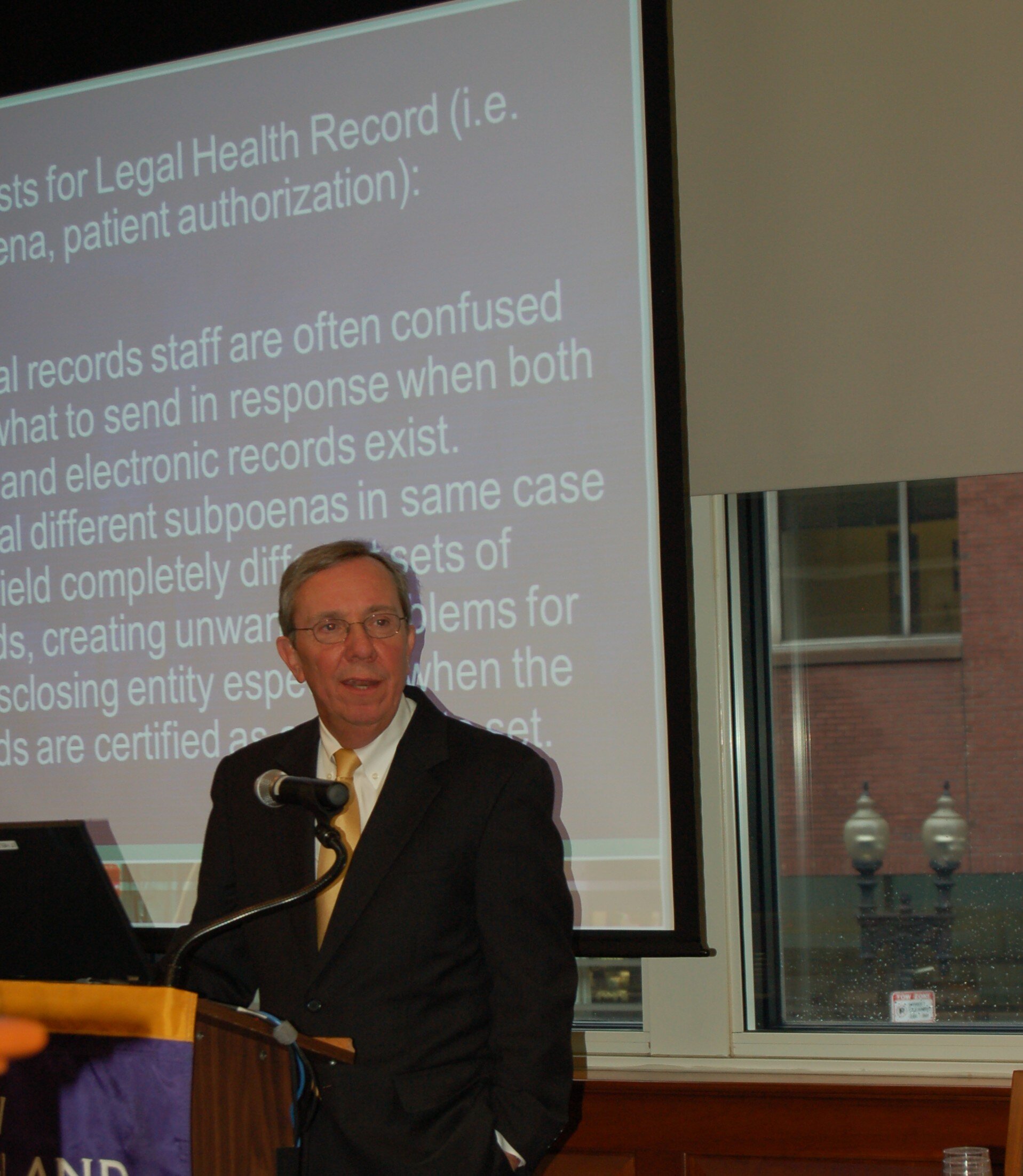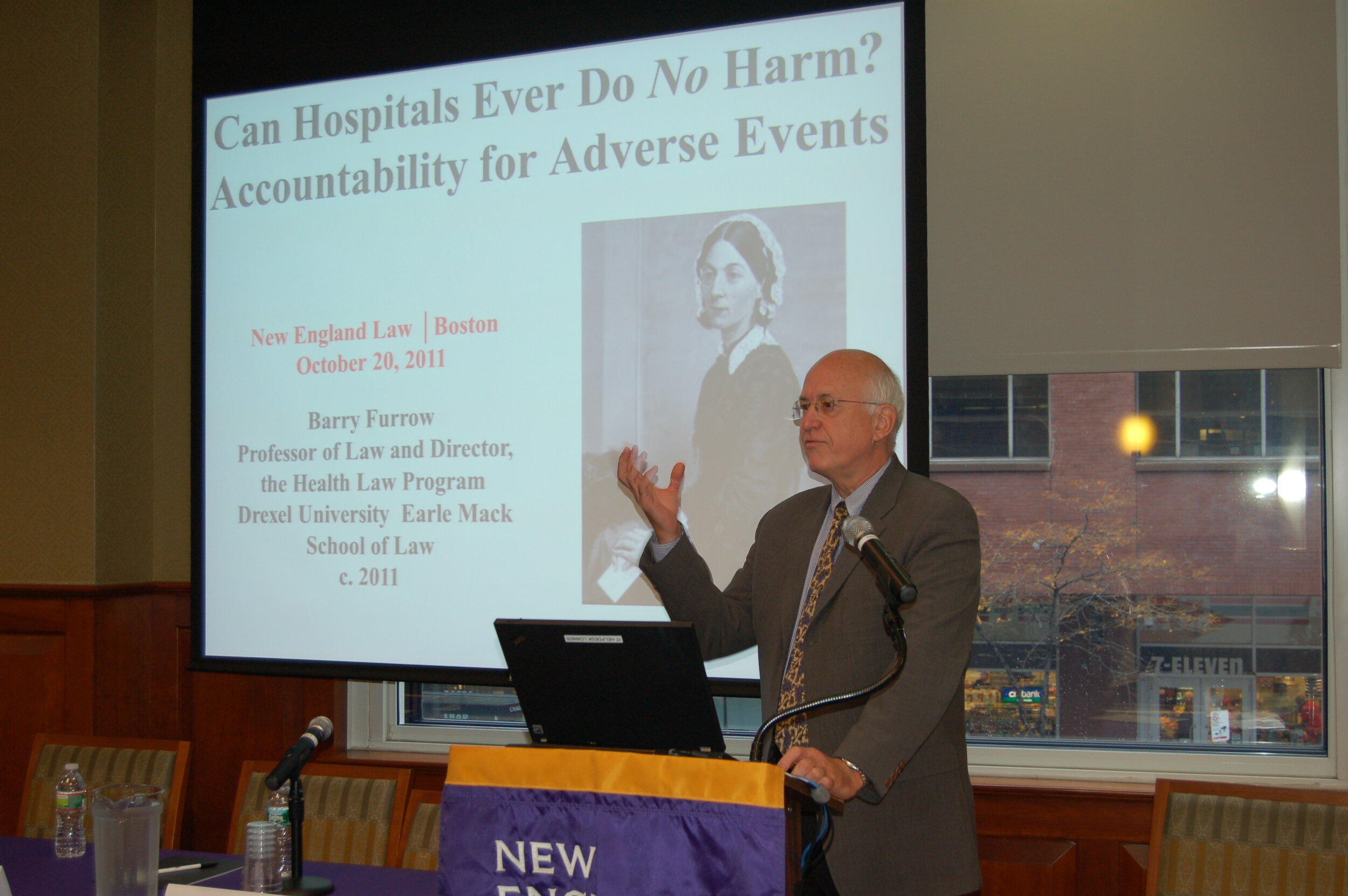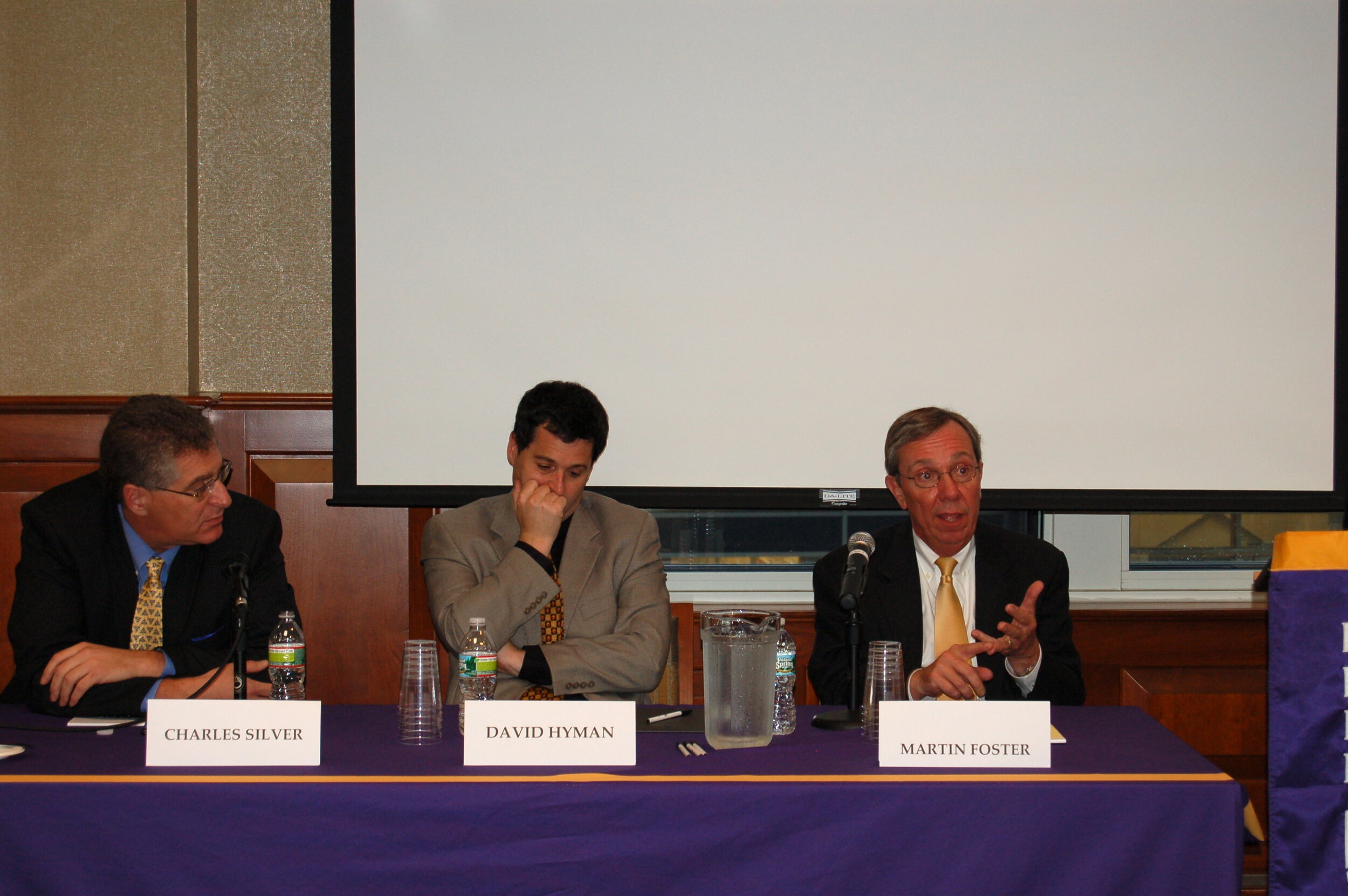On October 20, 2011, the New England Law Reviewhosted their annual symposium entitled “On the Table: An Examination of Medical Malpractice, Litigation, and Methods of Reform.” The 2011 symposium featured speakers from across the country discussing the crisis of healthcare costs and ideas for how to reduce the high occurrence of medical error. Additionally, the panelists examined innovative ideas for redressing plaintiffs’ injuries after negligent medical errors occur.
The first panel’s presentations addressed the current state of medical malpractice law and the landscape of the health care community. Medical malpractice defense attorney and Chairman of the Board of Trustees of New England Law | Boston, Martin C. Foster (‘80), Managing Partner, Foster & Eldridge, opened the day with a discussion of the current state of liability in Massachusetts. Chairman Foster provided an extensive case review of Supreme Judicial Court decisions that have created a “radical change in duty” for third parties. Chairman Foster also discussed the importance of Electronic Health Records (“EHR”). EHRs are becoming a ubiquitous part of medicine, but they are often difficult to use, leading to unintended errors and potential disclosure of confidential materials.
Professor David Hyman, University of Illinois, and Professor Charles Silver, University of Texas – Austin, jointly presented on the culture of medicine in a presentation entitled “Healthcare Quality, Patient Safety, and Culture of Medicine: Denial Ain’t Just a River in Egypt.” Professors Hyman and Silver assert that simple cultural changes in the medical community could have a large impact on eliminating preventable medical errors. They demonstrated this by an example of trying to eliminate infections from central lines with “five easy pieces.” While the five steps are effective in reducing the number of central line infections, the implementation is difficult because of the culture in hospitals. Without a shift in the cultural dynamics, increasing patient safety and reducing error will be difficult.
Professor Barry Furrow of Drexel University presentation, entitled “Can Hospitals Ever Do No Harm?: Accountability for Adverse Events.” Professor Furrow proposed new legal remedies for how to reign in the occurrence of adverse events. Some of his proposals included improving and increasing the requirements for mandatory reporting of adverse events by imposing penalties for failure to report, providing for treble damages in litigation when hospitals fraudulently conceal the occurrence of adverse events, and moving towards a warranty-based relationship between patients and hospitals and doctors.
The second panel examined innovative methods of addressing medical malpractice claims after the adverse event has occurred. The Honorable Douglas E. McKeon’s topic, entitled “New York’s Innovative Approach to Medical Malpractice,” which reviewed the novel and successful judge-directed negotiations in medical malpractice litigation in the Bronx District Court. The program has saved many millions of dollars for the hospitals, and the victims and their families still have a sense of justice. Judge McKeon also explored the possibility that medical malpractice litigation is a geographically based crisis and considered pooling resources to those communities with the most problems.
Professor Gabriel Teninbaum of Suffolk University Law School provided a talk entitled “Medical Apology Programs: Pros and Cons.” Professor Teninbuam’s presentation centered on his concern that medical apology programs, though they have the ability to be help save money, can be bad for plaintiffs when doctors act like attorneys. Professor Teninbaum expressed concern that in these apology programs, doctors are asked to act like attorneys, but without conforming to the same rules of conduct that govern lawyers. For instance, doctors should be required to clear up confusion regarding the adversarial nature of the relationship and inform the plaintiffs to seek counsel in order for this to be a fair and legal method of addressing medical malpractice.
Finally, Professor Eleanor Kinney of Indiana University School of Law – Indianapolis presented on “The Potential of Captive Medical Liability Insurance Carriers for Malpractice Reform.” Professor Kinney explained captive insurers are insurance companies formed by one or more non-insurance entities to write the insurance business of its owners. Professor Kinney’s presentation asserted that captive insurers’ incentives were aligned with the medical providers, instead of aligned with a third party, which will work to reduce the amount of medical errors total and provide more flexibility in compensating injured plaintiffs.
The Symposium was cosponsored by the American Health Lawyers Associations at New England Law | Boston and the Administration of Justice Section of the Boston Bar Association. This symposium is associated with the third issue of the Law Review’s Volume 46, which includes contributions from six of the panelists.
Featured panelists included:
Martin C. Foster ’80, Chairman of the Board of Trustees New England Law | Boston, Managing Partner, Foster & Eldridge, LLP
Professor Barry R. Furrow, Earle Mack School of Law at Drexel University
Professor David A. Hyman, University of Illinois College of Law
Justice Douglas E. McKeon, New York Supreme Court, Bronx County
Professor Charles Silver, University of Texas Law School
Professor Gabriel Teninbaum, Suffolk University Law School
Eleanor DeArman Kinney, Former Professor, University of Indiana Indianapolis School of Law
Moderator:
Dawn Effron, Adjunct Professor, New England Law Boston





